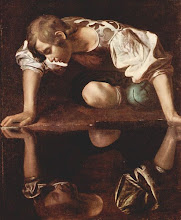Calleva Atrebatum means something like "the Atrebates' town in the woods" (not that different from Silchester!). The Atrebates were a Celtic tribe living in this area, with links to a tribe of the same name living in Gaul. Although the town itself has disappeared, its walls are still standing. It took me about 2 hours to walk the circuit of 2.8 km, but that was with lots of stops for photographs. The shape is roughly speaking a diamond with the top point at the North.

The sign in the carpark.
Information panel in the carpark.
Pretty frost covered trees between the carpark and the site.
Iron age bank and ditch between the carpark and the site.
Information panel when you get to the walls on the NW side of the site.
View across where the town was inside the walls.
View from the walls down into the ditch.
Overgrown NW wall.
View of the NW wall and outer ditch from inside rampart.
Close-up of the wall, showing construction of material
Information panel at North Gate.

The North Gate as it is now.
Close-up showing height and material
North East wall
Information panel for the amphitheatre

Niches in the amphitheatre, maybe for shrines
The amphitheatere
St. Mary's church inside where the East Gate probably was
Information panel on the SE wall
The SE wall from outside
Information panel at the South Gate
The South Gate
The BBC has a page about Silchester, written by Michael Fulford of the University of Reading, which maintains a website about Silchester and holds regular digs there which are open to public participation. The Museum of Reading's website has information about objects found at Silchester, including the eagle which inspired Rosemary Sutcliff.
All photos on this page are my own. Please link to this blog entry if you use them.







4 comments:
The most important finds from Calleva are displayed at the excellent Reading Museum in Reading, which is well worth a visit. Go to
http://www.readingmuseum.org.uk/collections/silchester.htm
(In the Normal/Mediaeval Gallery, there is also an exact copy of the Bayeux Tapestry).
Yes, I was hoping to go there, but unforunately, the weather intervened, so I just linked to their Silchester collection in my article.
HNY MA!
U2 WW
Post a Comment